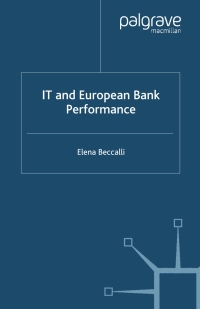Answered step by step
Verified Expert Solution
Question
1 Approved Answer
I got the first 2 parts correct but stuck on past 2 of this problem. Required information Problem 6-2AA (Algo) Periodic: Alternative cost flows LO




I got the first 2 parts correct but stuck on past 2 of this problem.
Required information Problem 6-2AA (Algo) Periodic: Alternative cost flows LO P3 [The following information applies to the questions displayed below.) Warnerwoods Company uses a periodic inventory system. It entered into the following purchases and sales transactions for March Units Sold at Retail Units Acquired at Cost 140 units @ $75 per unit 440 units @ $80 per unit Date March 1 March 5 March 9 March 18 March 25 March 29 Activities Beginning inventory Purchase Sales Purchase Purchase Sales 460 units @ $110 per unit 200 units 280 units @ $85 per unit @ $87 per unit 240 units@ $120 per unit 700 units Totals 1,060 units For specific identification, units sold include 90 units from beginning inventory, 370 units from the March 5 purchase, 80 units from the March 18 purchase, and 160 units from the March 25 purchase. Problem 6-2AA (Algo) Part 3 3. Compute the cost assigned to ending inventory using (a) FIFO. (b) LIFO, (c) weighted average, and (d) specific identification. (Round your "average cost per unit" to 2 decimal places.) Required information Periodic FIFO Cost of Goods Available for Sale Cost of Goods Sold Ending Inventory Cost per # of units Cost per Cost of Goods Sold Cost of Goods # of units unit Available sold for Sale $ 75.00 $ 10,500 90 # of units in ending inventory Cost per unit Ending Inventory unit 140 $ 75.00 $ 6,750 $ 0.00 $ 0 Beginning inventory Purchases: March 5 440 $ 80.00 370 $ 80.00 $ 0.00 0 March 18 200 80 $ 85.00 $ 0.00 $ 85.00 $ 87.00 0 35,200 17,000 24,360 $ 87,060 29,600 6,800 13,920 $ 57,070 AGAI March 25 280 $ 87.00 0.00 0 160 700 Total 1,060 0 b) Periodic LIFO Ending Inventory Cost per Cost per Cost per Cost of Goods Available for Sale Cost of Goods Sold Cost of Cost of Goods # of units # of units Goods unit Available sold unit Sold for Sale 140 $ 75.00 $ 10,500 # of units in ending inventory Ending Inventory unit S 0 Beginning inventory Purchases: March 5 March 18 440 80.00 0 200 $ 85.00 0 35,200 17,000 24,360 $ 87,060 $ 87.00 0 March 25 Total 280 1,060 c) Average Cost C) Average Cost Cost of Goods Available for Sale Cost of Goods Sold Ending Inventory # of units Average Cost per Cost of Goods Available for Sale # of units sold Average Cost per Unit Cost of Goods Sold # of units in ending inventory Average Cost per unit Ending Inventory unit 140 $ 10,500 Beginning inventory Purchases: March 5 March 18 March 25 440 200 35,200 17,000 24,360 $ 87,060 280 1,060 Total 0 0 d) Specific Identification Cost of Goods Available for Sale Cost of Goods Sold Ending Inventory Cost per # of units # of units sold Cost per Cost of Goods Available for Sale $ 10,500 unit Cost of Goods Sold Cost per # of units in ending inventory unit Ending Inventory unit 140 $ 75.00 $ 75.00 $ 0 S 75.00 $ 0 Beginning inventory Purchases March 5 March 18 March 25 Total $ 80.00 0 0 440 200 280 1,060 $ 80.00 $ 85.00 $ 87.00 0 35,200 17,000 24,360 $ 87,060 $ 85.00 $ 87.00 $ 80.00 S 85.00 S 87.00 0 Oo 0 0 0 Warnerwoods Company uses a periodic inventory system. It entered into the following purchases and sales transactions for March. Units Sold at Retail Units Acquired at: Cost 140 units @ $75 per unit 440 units @ $80 per unit 460 units @ $110 per unit Date March 1 March 5 March 9 March 18 March 25 March 29 Activities Beginning inventory Purchase Sales Purchase Purchase Sales Totals 200 units 280 units @ $85 per unit @ $87 per unit 240 units @ $120 per unit 700 units 1,060 units For specific identification, units sold include 90 units from beginning inventory, 370 units from the March 5 purchase, 80 units from the March 18 purchase, and 160 units from the March 25 purchase. Problem 6-2AA (Algo) Part 4 4. Compute gross profit earned by the company for each of the four costing methods. (Round your average cost per unit to 2 decimal places and final answers to nearest whole dollar.) FIFO LIFO Weighted Average Specific Identification Sales Less: Cost of goods sold Gross profit $ 0 $ 0 $ 0 $Step by Step Solution
There are 3 Steps involved in it
Step: 1

Get Instant Access to Expert-Tailored Solutions
See step-by-step solutions with expert insights and AI powered tools for academic success
Step: 2

Step: 3

Ace Your Homework with AI
Get the answers you need in no time with our AI-driven, step-by-step assistance
Get Started


